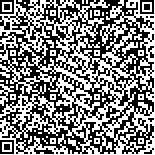| 摘要: |
| [摘要] 目的 探讨2型糖尿病患者在磺脲类药物用至足量后血糖控制不佳而改用胰岛素疗法后续用格列美脲的作用。方法 80例口服足量磺脲类药物血糖控制不佳的2型糖尿病患者先均改用格列美脲(3 mg,1次/d)8周,如血糖仍不达标者再改用胰岛素疗法(皮下注射门冬胰岛素30 U,2次/d)。随机分为续用格列美脲组和不续用格列美脲组,观察两组空腹血糖(FPG)及餐后2 h血糖(2hPG)、糖化血红蛋白(HbA1c)、体重指数(BMI)、胰岛素用量、低血糖发生次数等变化。结果 治疗28周及48周时,两组FPG、2hPG均较用胰岛素前明显下降。从第8周到28周,续用格列美脲组HbA1c从(9.2±1.1)%降至(7.9±1.0)%,并于48周进一步降至(7.1±0.6)%,不续用格列美脲组HbA1c从(9.1±1.0)%降至(8.3±0.9)%,但48周时HbA1c为(8.4±1.1)%。结束观察时续用格列美脲组日用胰岛素量比不续用格列美脲组少,分别为(0.21±0.12)U/(kg·d)和(0.34±0.13)U/(kg·d)。治疗过程中出现低血糖的患者,续用格列美脲组9例,不续用格列美脲组7例,差异无统计学意义(P>0.05)。两组均无严重低血糖事件发生。结论 在改为胰岛素治疗时,续用格列美脲药物可以减少胰岛素用量,更有效地控制血糖,而不增加低血糖风险。 |
| 关键词: 格列美脲 胰岛素 2型糖尿病 |
| DOI:10.3969/j.issn.1674-3806.2012.02.13 |
| 分类号:R 587.1 |
| 基金项目: |
|
| Effect of glimepiride in insulin therapy instead of sulfonylureas treatment in patients with type 2 diabetes mellitus |
|
XU Wen-jian,LIU Guo-feng,WANG Xu-tao,et al.
|
|
Department of Endocrinology,the Second Affiliated Hospital of Luohe Medical College,Henan 462000,China
|
| Abstract: |
| [Abstract] Objective To investigate the effect of glimepiride in insulin therapy instead of sulfonylureas treatment in patients with type 2 diabetes mellitus whose blood glucose was poorly controlled with adequate sulfonylureas.Methods Eighty patients with type 2 diabetes mellitus whose blood glucose was poorly controlled with adequate sulfonylureas were treated with glimepiride at 3 mg,qd, for the previous 8 weeks instead of sulfonylureas.The patients whose blood glucose did not meet the blood glucose control substandard were treated by insulin therapy: twice daily subcutaneous injection of insulin aspart 30 U,and were randomly divided into two groups: continuation of glimepiride group(CONT) and discontinuation of glimepiride group(DIS).FPG,2hPG,HbA1c,BMI、insulin daily dose and number of hypoglycaemic episodes were observed.Results FPG,2hPG of two groups both declined dramaticly at the 28th week and the 48th week. HbA1c values significantly declined from (9.2±1.1)% at the 8th week to (7.9±1.0)% at the 28th week in the CONT group,and furtherly declined to(7.1±0.6)% at the 48th week. HbA1c values declined from(9.1±1.0)% to(8.3±0.9)% in the DIS group accordingly,and were(8.4±1.1)% at the 48th week. The insulin daily dose used in the CONT group was much less than that in the DIS group at the end of the study,(0.21±0.12)U/(kg·d) and(0.34±0.13)U/(kg·d), respectively.The number of hypoglycaemic episodes was 9(CONT group) and 7(DIS group) respectively during the treatment.The difference was not statistically significant. No severe hypoglycaemic episode was observed in both groups.Conclusion Continuation of glimepiride during insulin therapy instead of sulfonylureas treatment can control glucose more effectively with less insulin daily dose,without increased hypoglycaemic risk,compared to discontinuation of glimepride. |
| Key words: Glimepiride Insulin Type 2 diabetes mellitus |

